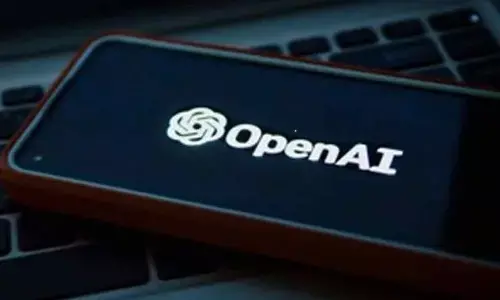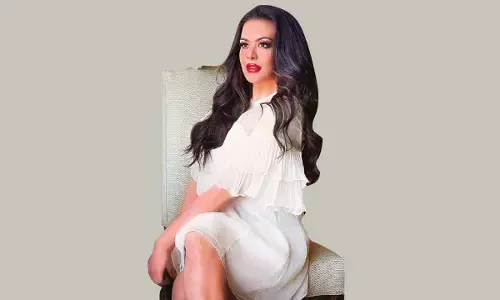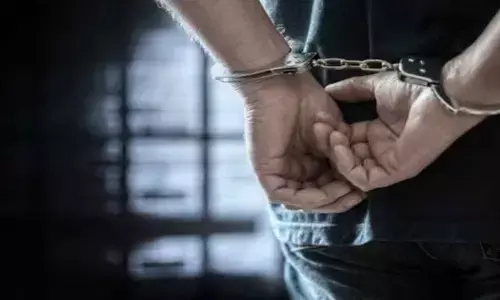Budget wish list to energise rural sector

The coming budget is going to be presented on the backdrop of slowdown in the economy, high unemployment, and severe agrarian and rural distress.
The coming budget is going to be presented on the backdrop of slowdown in the economy, high unemployment, and severe agrarian and rural distress.
With stable government back in power, budget had to go beyond populist schemes with long term focus on creating rural demand, rural infrastructure and market reforms.
The rural economy can pick up with right incentives unleash market powers along with effective implementation of proper safeguard measures like PM-KISAN.
This year's budget has to be prepared on the backdrop of slowing economy and delayed monsoon, which invariably reduce agricultural activities in main kharif season.
The sluggish domestic growth is compounded by the lacklustre global growth, which reduce demand for Indian exports. As elections are just over, now it is time to shift focus on long term growth of the economy.
Rural and agricultural sector is sluggish mainly due to both supply side factors like lack of technological progress to reduce costs and increase competitiveness in an open economy, minuscule farm returns to farmers due to rising prices of inputs like labour, seed and fertilizer coupled with declining output prices, lack procurement mechanism for major crops.
The low profits year after year forced farmers to widespread agitation by farmers for loan waivers. Although, Rythu Bandhu, PM-KISAN and crop insurance schemes are helping farmers to alleviate from distress, there are many implementation issues and these schemes don't have capacity to boost rural economy.
For long term growth government should emphasis on rural infrastructure, construction of rural roads, warehouses, removing all regulations and rules which hinder market- oriented growth in rural areas.
Given that the average farm size was too little for majority of farmers compared to global standards, they may not be competitive internationally, if they are not reorganised themselves into farmers producer organisations or companies or cooperatives which will overcome most of the problems of small-scale farming.
In India, average farmers income is about Rs.1.5 lakh per annum, which is less than the lowest cadre salary of any government employee.
Hence, there is a need to provide incentives for creation of employment and income opportunities in non-farm and off-farm sectors either by promoting self-employment or by encouraging private sector.
In future, non-farm employment will be growth engine for rural areas. Hence, budget should look beyond farm sector to increase farmer's incomes. Some suggestions to boost rural sector is given below.
Coverage of vulnerable sections beyond PM-KISAN
To ensure minimum basic income for every household, the Economic Survey 2016-17 suggested universal basic income for each household.
But given fiscal constraints, universality may not be feasible in India and PM-KISAN which provide Rs.6000 per each farm-household is a right step.
However, the poorest of the poor who are not included but still depend on agriculture like tenant farmers and agricultural labourer needs to be covered by some other schemes which can be administered by the Ministry of Agriculture.
For identifying these groups, officials may take the help of village panchayats and gram sabhas, as they have all the necessary records and in a position to cross-check and rectify mistakes if any to reduce leakages and misuse of the scheme.
Thanks to Jan Dhan Yojana scheme, most of these tenant farmers and agricultural labourer are already linked to Aadhaar seeded bank accounts.
Direct money transfer of say Rs.10,000 per household in two instalments during the starting of the sowing season in each year can help these vulnerable rural households in many ways.
It was reported that, suicide rates were higher among tenant farmers than owner-farmers in across India. Providing these little support of Rs.10,000 will free them from all forms of rural exploitation and freed them to work on their own will and enhances the productivity and incomes.
Across the world, there is a clear evidence that a small amount of money transfer to households who don't have cash will positively contribute to many ways, school enrolments among children of beneficiaries will increase, they may engage in employment and other income generating activities, they may start some petty business like tea shop, cycle repair etc, banks also prefer to give small loans to them as they are now having stable source of cash flow although small and reduce dependence on borrowing from money lenders at higher interest rates.
This increases rural entrepreneurship; increases rural demand and generate employment and income through multiplier effect.
Removing bottlenecks in ongoing projects
The ongoing flagship programmes like Rastriya Krishi Vikas Yojana(RKVY) to increase farmers' incomes, Prime Minister Krishi Sinchayi Yojana( PMKSY) to increase area under irrigation, Prime Minister Fasal Bhima Yojana(PMFBY) to increase coverage of crop insurance and e-National Agricultural Markets (NAM) for increasing market efficiency are started to give visible results.
There is a need give high priority with more fund allocation to sustain the tempo and to ultimately benefits to reach small and marginal farmers.
Basic needs
Since long, employment guarantee programme (MGNREGA) and Public Distribution System (PDS) and Pradhan Mantri Gramin Awaas Yojana (PMAY) are paying a key role in not only providing employment, food and shelter, they also pumping in purchasing power in rural India.
Some studies pointed out that, if MGNREGA and PDS function well in the rural areas, they reduced poverty by 11 to 12 per cent.
The budget allocations for employment guarantee programme, PDS, rural infrastructure projects like construction of rural roads, rural housing should be given high priority.
Reduce input costs and ease of doing business in rural areas
Low cost of production and livelihoods are key strategic competitive advantage for rural India to attract and retain private sector investments in rural India.
However, in the recent past, cost of inputs like seed, fertilizer, pesticide, transport, logistic and rental costs were increased.
To reverse this trend, government has to promote investments in rural infrastructure like roads, warehouses, markets and also simplify rules which ultimately rewarded by bringing costs down and enhanced competitiveness.
Inclusiveness of tenant farmers
Tenant farmers are most excluded and vulnerable category in rural India. They are not benefiting from many of the government schemes like subsidized seed, bank loan, crop insurance scheme and subsidies on drip etc.
The distress among tenant farmers is higher than owner farmer. Tenants have to pay about 30% to 40% of the average sales value of production to landlords as rent.
This is unbearable if the crop fails, as it happens once in every three years. There is a need for a clear policy to ensure that the tenant farmers benefit equally as that of owner-farmers from all government schemes.
Extra budget to agriculture and rural sector
Overall, this budget needs to give extra helping hand to the farmers, tenants, agricultural labourer, village artisans and rural workers to increase and stabilize their incomes, so that they may not be forced in to debt trap in the hands of moneylenders.
(The author is Principal Scientist (Agricultural Economics) in Hyderabad)















